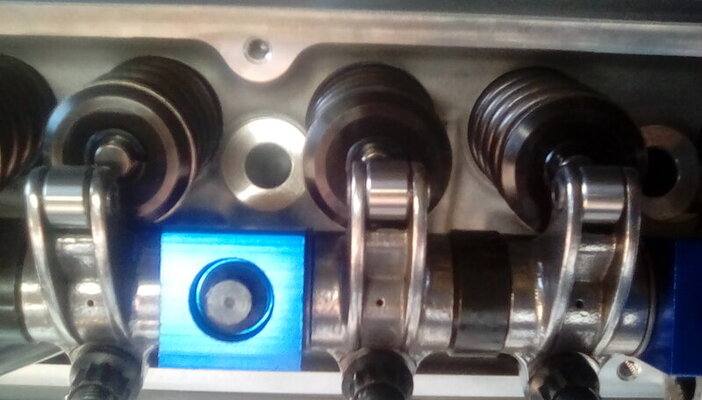For pushrod oiling to the rocker arms the adjusters should ideally look something like the picture below. The portion that is recessed and void of threads should intersect with the hole drilled in the rocker so it receives the oil. The hole coming up from the pushrod cup should be drilled a little past the intersecting rocker arm feeder hole so the rocker gets all the oil being fed from the pushrod.
These pictures are from a set of T&D shaft mounted rockers for small block heads.


These pictures are from a set of T&D shaft mounted rockers for small block heads.

















